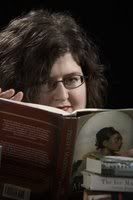 In 1999 John Berendt shot into the limelight with Midnight in the Garden of Good and Evil, a book that won him an unprecedented four-year run on the New York Times bestseller list. Seven years later, Berendt presents readers with his long-awaited second book – The City of Falling Angels.
In 1999 John Berendt shot into the limelight with Midnight in the Garden of Good and Evil, a book that won him an unprecedented four-year run on the New York Times bestseller list. Seven years later, Berendt presents readers with his long-awaited second book – The City of Falling Angels.What readers enjoyed most about Midnight is Berendt’s ability to capture a sense of place with words. Readers felt as if they had traveled to Savannah, investigated the mystery themselves and knew the eccentric denizens intimately. Berendt’s legion of fan will be delighted to know that his familiar tone graces The City of Falling Angels, and readers will be quickly captured by the charms of Venice.
City opens on the evening of January 29, 1996, the night a devastating fire destroys the historic Fenice opera house. This catastrophic loss is soul-destroying for many Venetians and, fortuitously arriving in Venice three days after the fire, Berendt chronicles the aftermath.
While peripherally an investigation into the causes of the Fenice fire, really this event only provides Berendt the setting, around which to wrap a chronicle of the characters he meets in Venice. Once again, Berendt appears to be a magnet for the eccentrics, whom appear drawn to any notorious city. As Berendt hunts for the key players to help him understand the political dynamics shaping the reconstruction of the Fenice, he uncovers the love/hate relationship many Venetians feel for their city – and the constantly shifting political sands driving any major effort in Venice.
Venice is a city loved by many tourists and in City, Berendt explores the efforts many have made to save the history, art and architecture from the ravages of rising water and decay. In a post-9/11 world, many understand the symbolism a building can represent. Places tend to mean much more than just the daily uses citizens make of it. In the Venice of permanent residents, the Fenice is one of the few remaining buildings that is theirs, rather than the tourists’. Rebuilding it means restoring the soul of this magnificent city and Berendt brilliantly chronicles the political challenges complicating the task.
Read the review at Curled Up with a Good Book.
ISBN10: 0143036939
ISBN13: 9780143036937
Trade Paperback
416 Pages
Publisher: The Penguin Press
Publication Date: September 26, 2006
tags: books book reviews John Berendt Venice Fenice Opera House


4 comments:
Hooray!! I can comment here now -- had problems earlier.
I read this book earlier this year -- and found a lot to like, but also a lot to quibble about.
Without wishing to sound snobbish, I do think this is the kind of book that panders to Americans, because it presents a very American-ised view of Venice.
I did, however, love the chapter about Ezra Pound. When I went to Venice in 2001 I visited the cemetary isle, San Michele, and tracked down his grave.
I'm going back to Venice at the end of the month. Cannot wait!
I have to agree with your comment - this really is an American-ised view of Venice. Really, it's John Berendt's view of the situation and most of the key players in the dramas he describes (other than the builders) are American.
It has made me really want to visit Venice and I am so jealous of your impending trip there! I'm looking forward to hearing about it on your blog.
I really enjoyed your review. I think this one will be added to the mountain!
Thanks Heather! I'd recommend it, Berendt books are always entertaining and enjoyable to read.
Post a Comment